Abstract
When the temperature of incorporation of sodium acetate-1, 2-14C into lipids of alfalfa (Medicago media Pers. var. Rambler and Medicago sativa L. var. Caliverde) roots was lowered from 22 C to 1 C, elongation and desaturation of fatty acids and the labeling of phosphatidylcholine were strongly stimulated.
Controlled hardening of alfalfa stimulated strongly the incorporation of sodium acetate-1, 2-14C into root lipids of the hardy variety Rambler, but only slightly in the case of the frost-sensitive variety Caliverde. When incorporation was done at 1 C at various times of hardening, labeling decreased significantly in linoleic acid with a corresponding increase in oleic acid. Hardening, therefore, repressed specifically the initial low temperature stimulation of oleic acid desaturation, without affecting the stimulation of elongation of palmitic acid and the desaturation of stearic acid at low temperature. The radioactivity in linoleic acid was slightly greater in hardy Rambler than in Caliverde throughout hardening.
When feedings were done at 1 C at various times of hardening, labeling of phosphatidylcholine increased in Rambler while it decreased in Caliverde. Throughout the hardening period, when incorporation was done at 1 C, linoleic acid represented a higher percentage of the label in phosphatidylcholine than in phosphatidylethanolamine or triglycerides and its specific radioactivity was much greater in phosphatidylcholine than in phosphatidylethanolamine and triglycerides and in Rambler than in Caliverde. Phosphatidylcholine seems, therefore, to play a special part in linoleic acid synthesis and in its control during the acquisition of frost hardiness.
Full text
PDF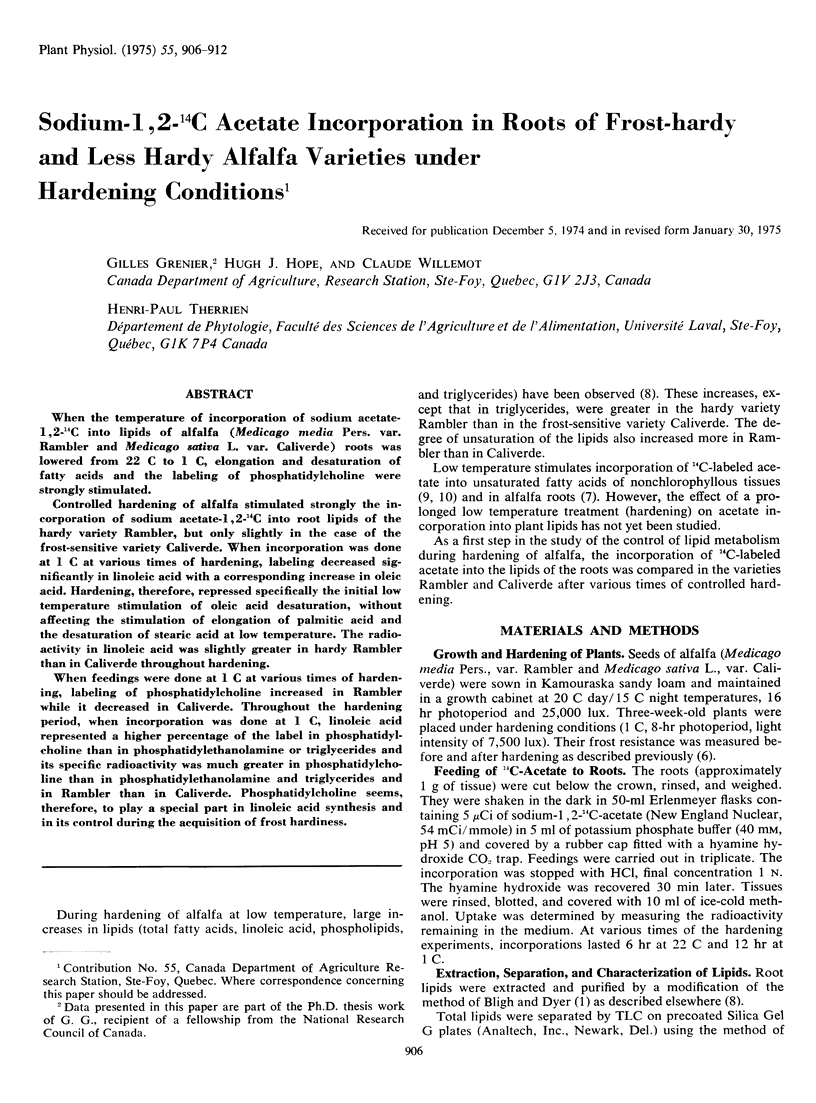
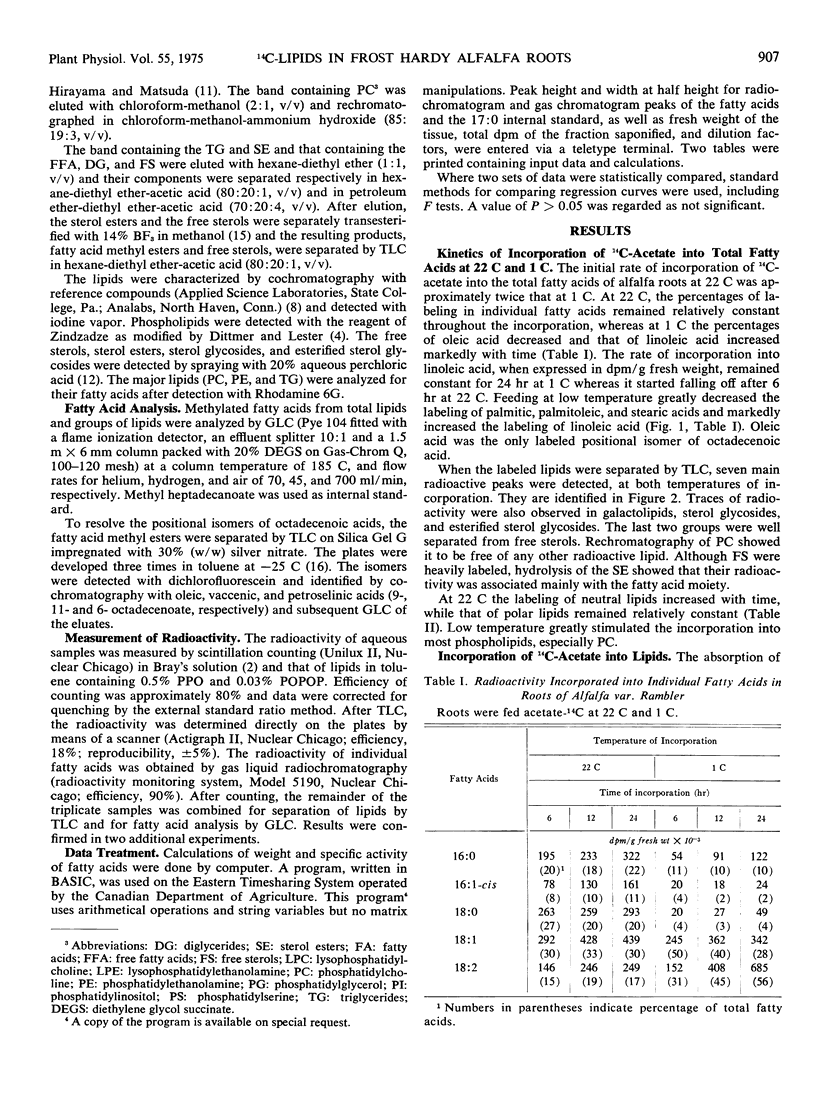
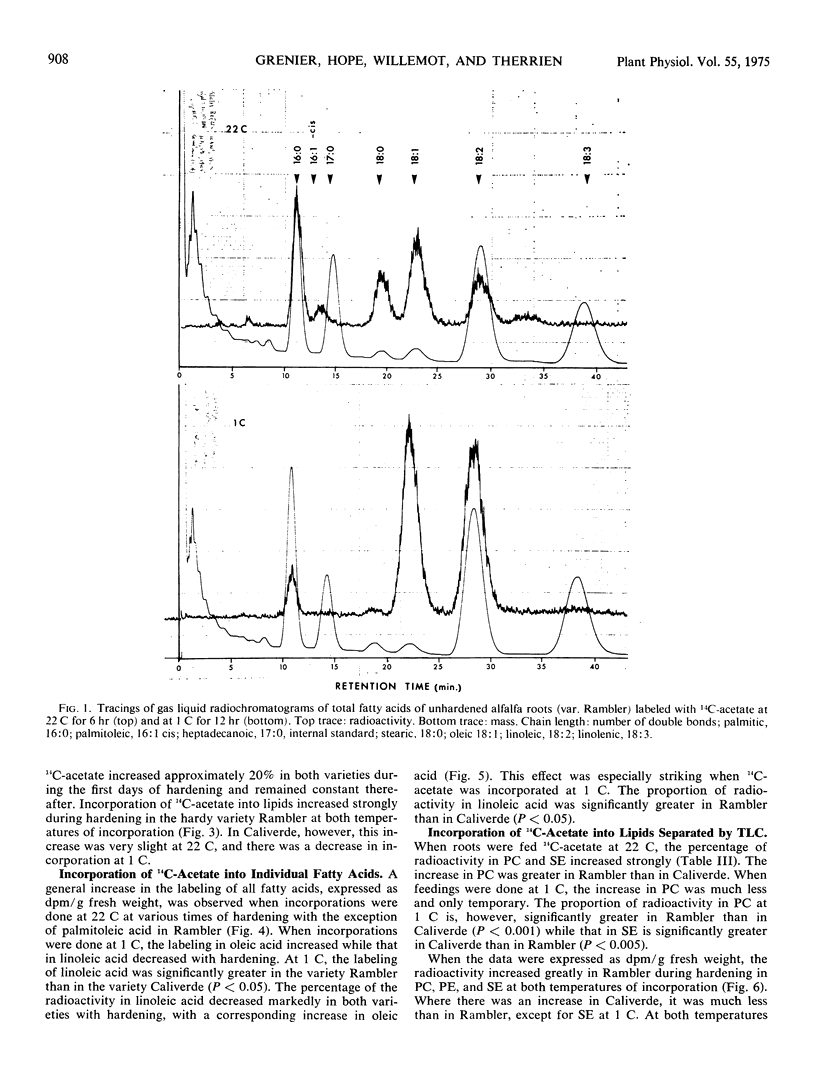
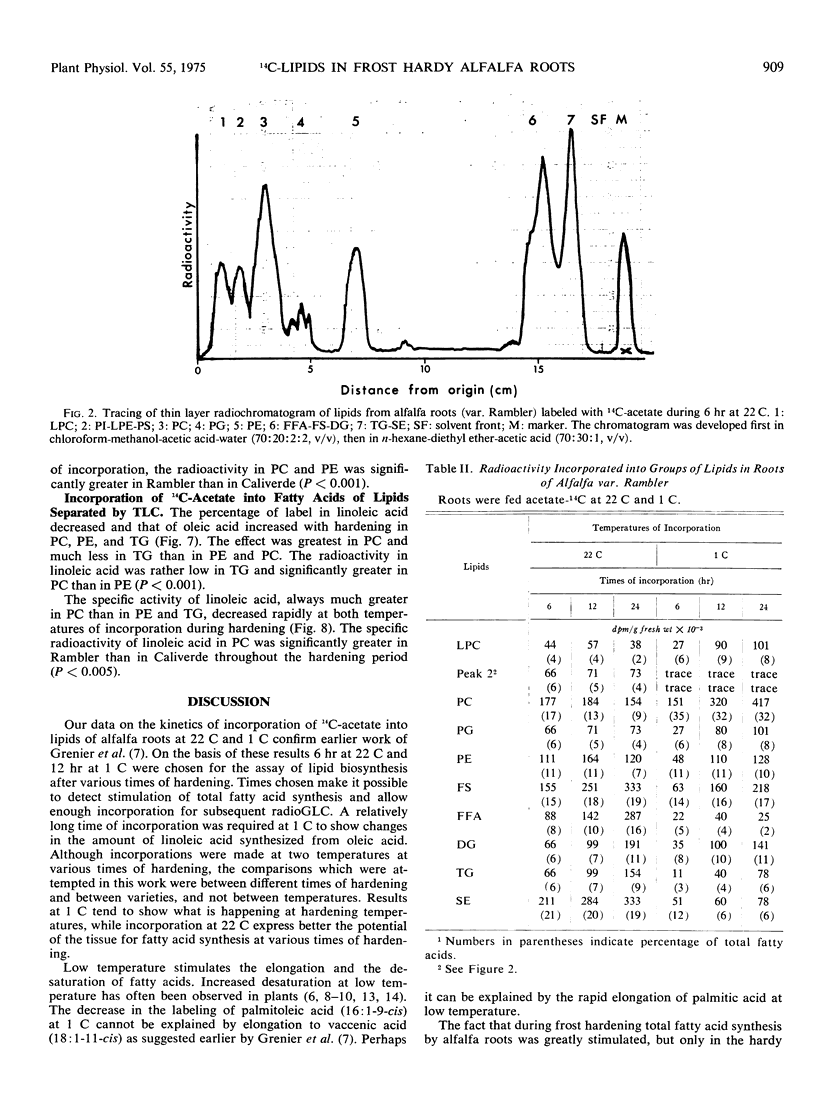
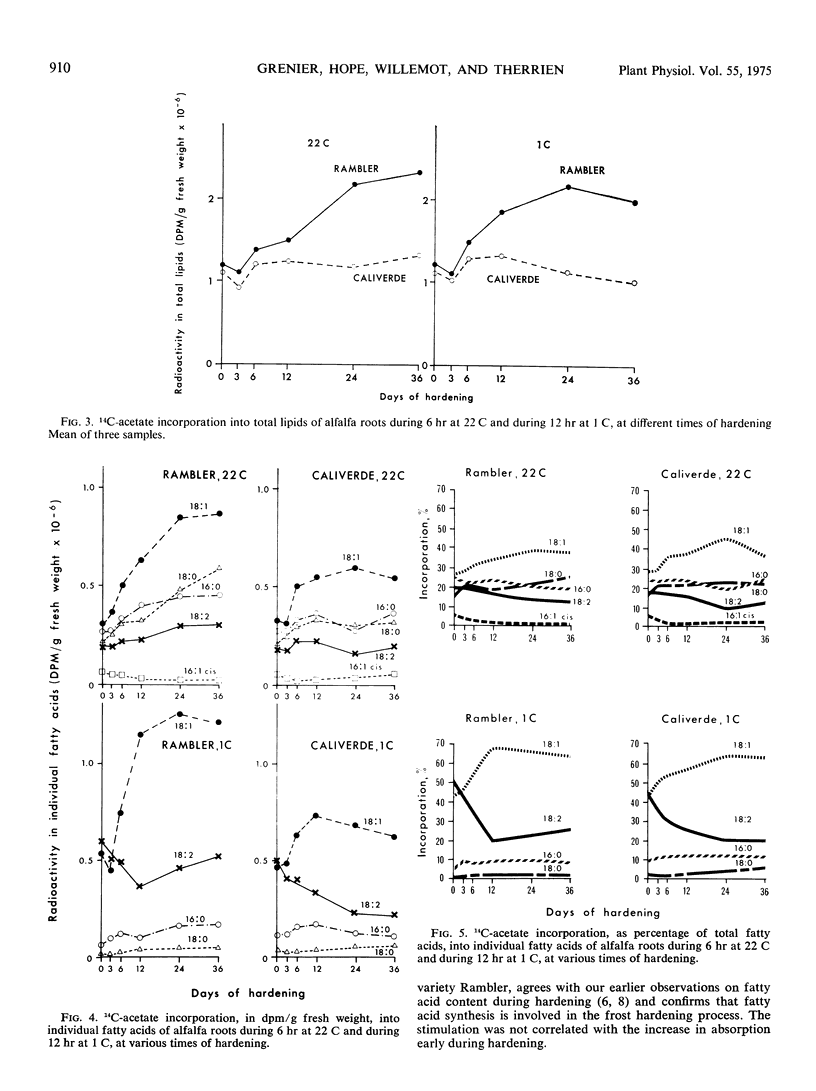
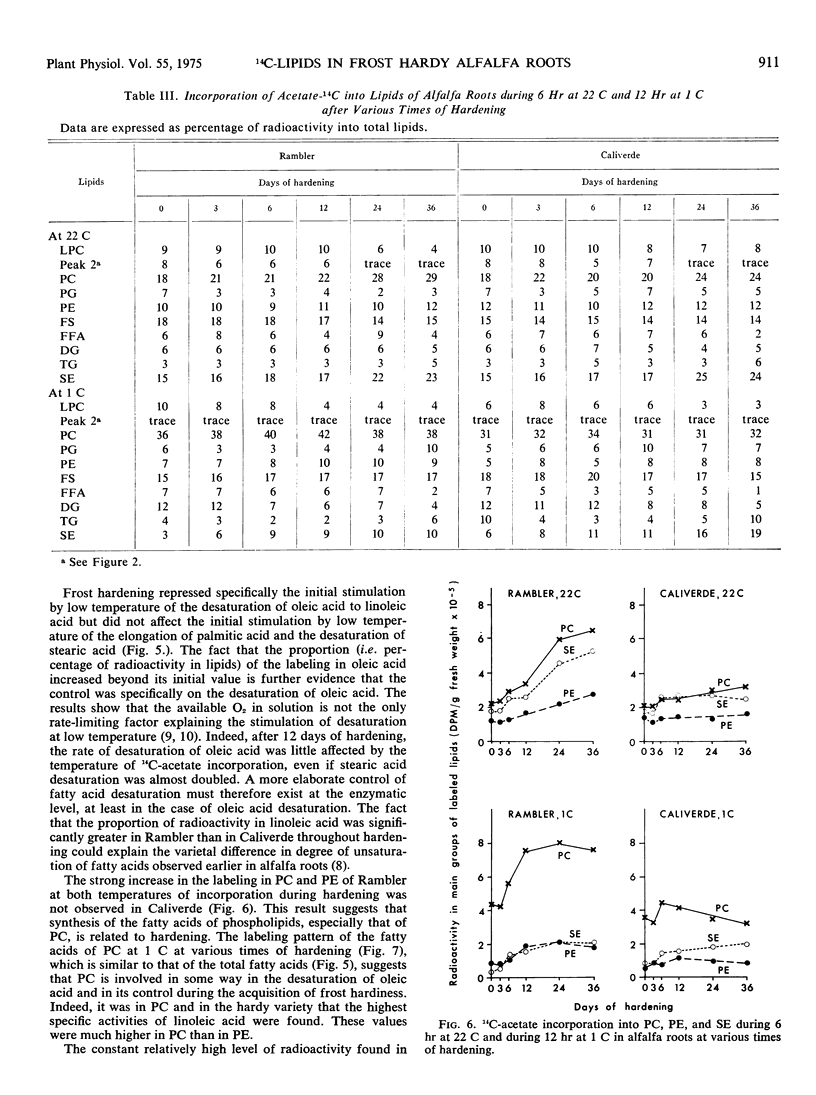
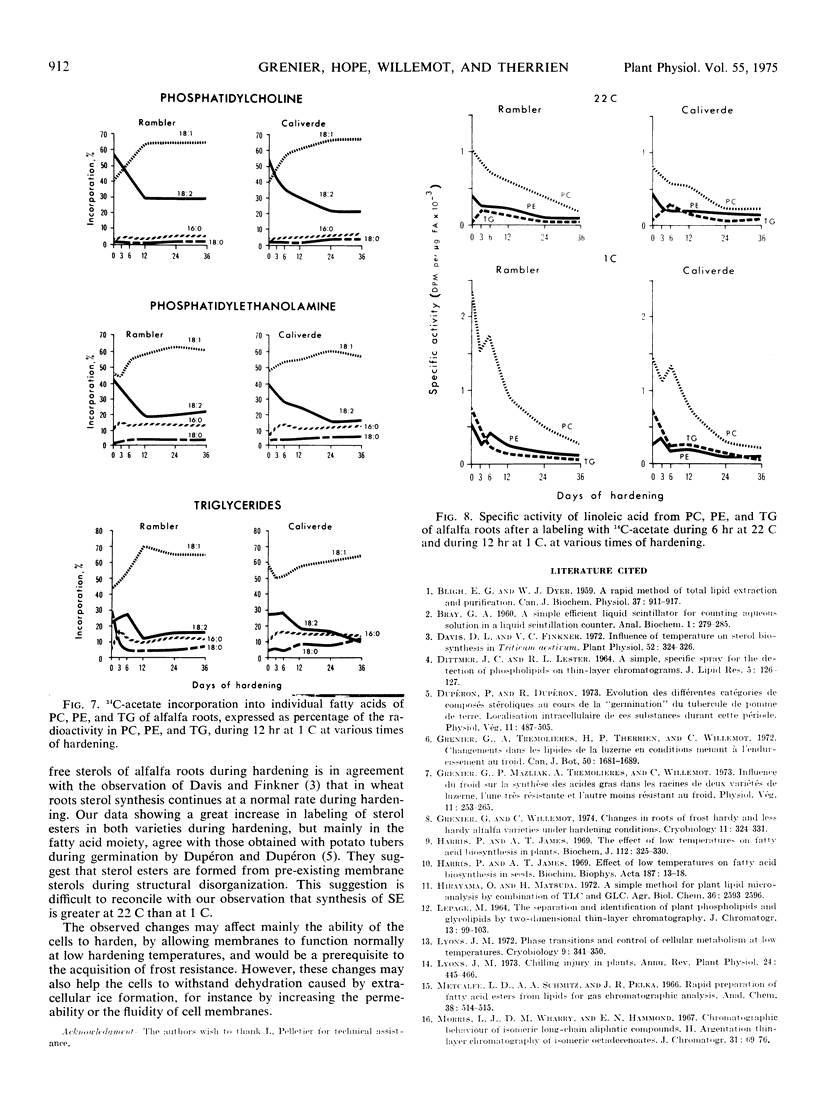
Selected References
These references are in PubMed. This may not be the complete list of references from this article.
- BLIGH E. G., DYER W. J. A rapid method of total lipid extraction and purification. Can J Biochem Physiol. 1959 Aug;37(8):911–917. doi: 10.1139/o59-099. [DOI] [PubMed] [Google Scholar]
- DITTMER J. C., LESTER R. L. A SIMPLE, SPECIFIC SPRAY FOR THE DETECTION OF PHOSPHOLIPIDS ON THIN-LAYER CHROMATOGRAMS. J Lipid Res. 1964 Jan;5:126–127. [PubMed] [Google Scholar]


